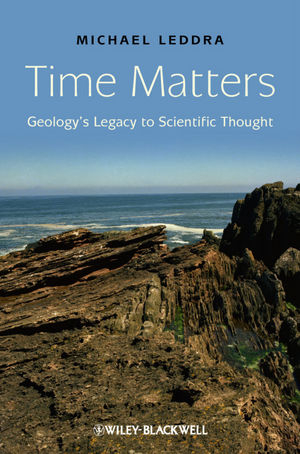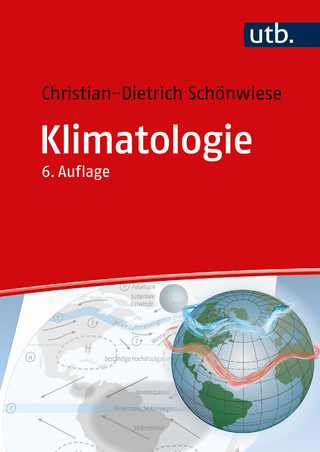
Time Matters
Wiley-Blackwell (Verlag)
978-1-4051-9909-4 (ISBN)
- Titel z.Zt. nicht lieferbar
- Versandkostenfrei
- Auch auf Rechnung
- Artikel merken
Time Matters provides an invaluable insight into the background behind some of the key concepts we use in Earth science today. It shows the historical context in which these ideas were developed, the important contributions of individual scientists and thinkers, and how these ideas continue to shape our view of science and the world in which we live. The book covers subjects such as the age of the earth, catastrophism vs uniformitarianism, evolution vs creationism, plutonism vs neptunism, continental drift and plate tectonics. It explores the people involved, their ideas and the scientific and religious power politics involved in the development. It is effectively partly a review of the way in which science works or does not work. The text includes questions and comment boxes which help the reader to appreciate/understand the ideas and concepts that have been included and their problems, strengths or weaknesses.
Accessible introduction – does not assume prior knowledge
Teaches scientific thought – particularly the use of evidence
Topic based – uses a set of key geological theories
This book is written for anyone with an interest in geology and the history of science, but will be particularly valuable to university or high-school students beginning a study of earth science for the first time.
Mike Leddra worked as a cartographer before gaining a degree in geology and geography from King’s College, University of London, and a PhD in geology from University College, University of London. In 1993, he became a Senior Lecturer in Engineering and Environmental Geology at the University of Sunderland, where he also qualified as a secondary school geography teacher. He now runs his own education consultancy, Forefront Teaching Resources Ltd.
Preface. Acknowledgements.
Introduction.
1 Geological time.
1.1 Introduction.
1.2 The historical perspective.
1.2.1 The march of the scientists.
1.2.2 The atomic age.
1.3 Geological time and the age of Mother Earth.
2 Dating rocks.
2.1 Introduction.
2.2 The nature of stratigraphy and the principles of relative dating.
2.3 Biostratigraphy.
2.4 Radiometric dating.
2.4.1 Potassium.
2.4.2 Rubidium.
2.4.3 Uranium.
2.4.4 Carbon.
2.4.5 Mass spectrometer.
2.5 Dating by fi ssion tracks.
2.6 Magnetism.
2.6.1 Thermal remnant magnetism.
2.6.2 Depositional remnant magnetism.
2.6.3 Palaeo-magnetism and Polar wandering.
3 The origins of the geological time scale.
3.1 Introduction.
3.2 Jurassic.
3.3 Carboniferous.
3.4 Triassic.
3.5 Tertiary.
3.6 Cambrian.
3.7 Silurian.
3.8 Devonian.
3.9 Permian.
3.10 Mississippian.
3.11 Quaternary.
3.12 Ordovician.
3.13 Cretaceous.
3.14 Pennsylvanian.
3.15 Proterozoic.
3.16 Archean and Hadean.
4 Plutonism versus Neptunism.
4.1 Introduction.
4.2 Neptunism.
4.3 Plutonism.
5 Uniformitarianism versus Catastrophism.
5.1 Introduction.
5.2 Catastrophism.
5.3 Diluvialism.
5.4 Uniformitarianism.
5.5 Mass extinctions.
5.6 Alternating warm and cold conditions.
5.7 Catastrophes and the nature of science.
5.8 Palaeogeography and Earth history.
6 Evolution.
6.1 Introduction.
6.2 Darwin and evolution.
6.3 Punctuated equilibrium and geographic speciation.
6.4 Intermediates - what are we looking for?
7 Evolution versus Creationism.
7.1 Introduction.
7.2 Fossils.
7.2.1 The Medieval view.
7.2.2 The 17th- and 18th-century view.
7.2.3 The 19th-century view.
7.2.4 Mantell versus Owen.
7.3 Famous Evolution versus Creation debates.
7.3.1 Huxley versus Wilberforce.
7.3.2 Huxley versus Gladstone.
7.3.3 The abolition of the equal time laws in America.
7.3.4 The nature of life and science, and Evolution versus Creationism.
7.4 Lagerstatten.
8 Continental Drift and Plate Tectonics.
8.1 Introduction.
8.2 Mountain building.
8.3 Isostasy.
8.4 Continental Drift.
8.5 Plate Tectonics.
9 What have we learnt?
Bibliography.
Index.
| Verlagsort | Hoboken |
|---|---|
| Sprache | englisch |
| Maße | 158 x 236 mm |
| Gewicht | 535 g |
| Themenwelt | Naturwissenschaften ► Geowissenschaften ► Allgemeines / Lexika |
| Naturwissenschaften ► Geowissenschaften ► Geologie | |
| ISBN-10 | 1-4051-9909-1 / 1405199091 |
| ISBN-13 | 978-1-4051-9909-4 / 9781405199094 |
| Zustand | Neuware |
| Haben Sie eine Frage zum Produkt? |
aus dem Bereich


